The Pacific Northwest is one of Mother’s Nature’s verdant playgrounds.
While the deserts highlight her talent for architectural simplicity, and she lets her full range of colors show in the tropical rainforests, it’s in the temperate rainforest landscapes of Oregon, northern California, Washington, and British Columbia where it seems like she gave herself permission to have fun with every shade of green imaginable.
Humans have made their mark on this lush landscape by capturing and guiding the natural beauty there, and even bringing in plants that might not otherwise appear in the region.
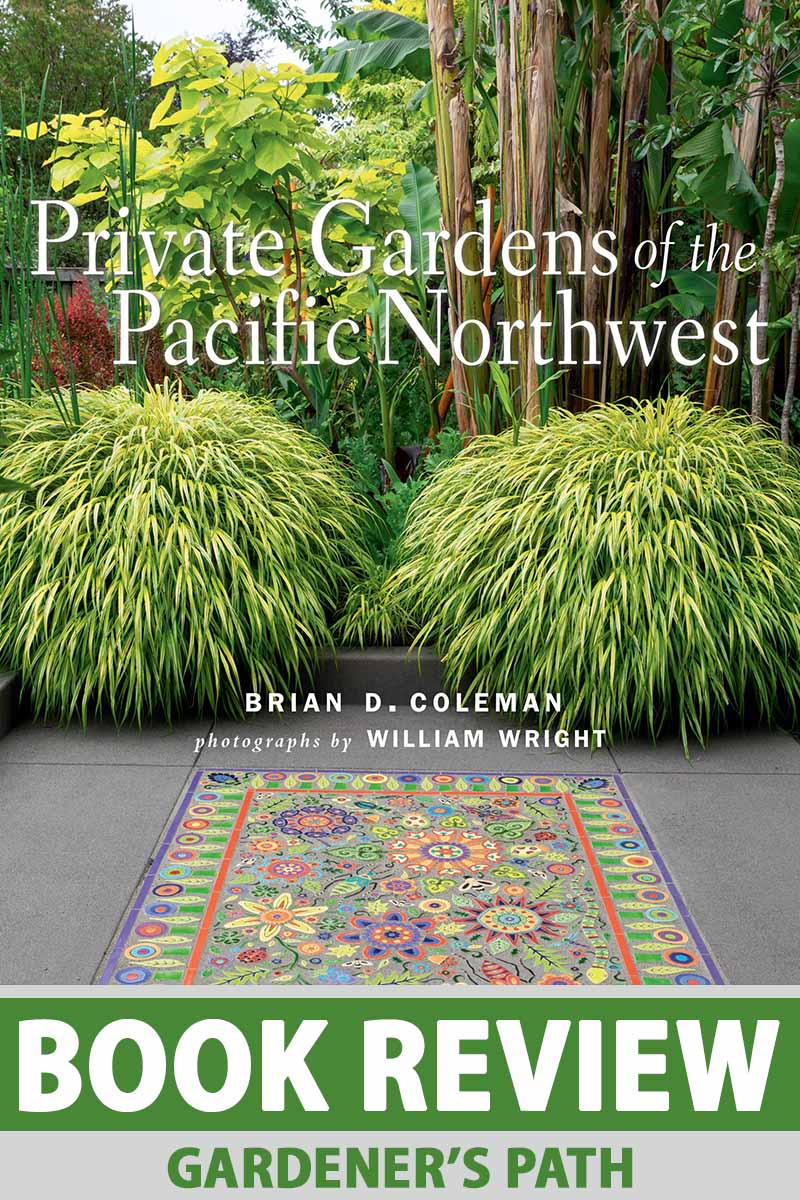
We link to vendors to help you find relevant products. If you buy from one of our links, we may earn a commission.
Lucky garden-lovers can enjoy the splendor in the Pacific Northwest’s numerous impressive public gardens.
However, only a lucky few can get a glimpse at many of the private gardens that capture the organic brilliance of the region.
In “Private Gardens of the Pacific Northwest,” written by Brian D. Coleman, with a foreword by Art Wolfe, and photos by William Wright, readers are treated to the history, development, and stunning components of some of the most stand-out private spaces in Washington and Oregon. This book is available on Amazon.
If you’ve ever wondered what marvels hide on the private islands, hidden acres, and tucked-away treasures of the PNW, this book offers a peek into the fabulous wonders that few people will experience.
Private Gardens of the Pacific Northwest
What’s It All About?
This coffee-table book, published by Gibbs Smith, isn’t so much a how-to but rather an exploration of what’s possible.
Measuring a little over nine by 11 inches, readers will delight in all 256 pages of gorgeous photography paired with the stories of these incredible spaces, and the gardeners who cultivate them.

Both Coleman and Wright reside in Seattle, and share a special interest in architecture, gardening, and natural spaces.
The Pacific Northwest has public gardens galore, from single-genus gardens that feature roses, rhododendrons, fuchsias, dahlias, and azaleas, to more diverse botanical gardens like Portland’s renowned Japanese garden and Seattle’s stunning Streissguth Gardens.
This book, however, takes the public into places that they might not otherwise ever see.
There are 20 private gardens featured in this book, and they run the gamut from a small urban lot in Portland to a 17-acre getaway on a rural Washington island.
Some of the places featured are formal, with classically delineated spaces and defined walkways. Others are less formal, letting nature dictate the layout.

Granted, some of these gardens are only within reach of those with a lot of money to make their pastoral dream a reality, but in each case, they highlight elements that anyone can use to add interest to their own space.
For instance, Loree Bohl of The Danger Garden blog is featured with her small Portland, Oregon space, which is made up of spiky, prickly plants that are decidedly un-rainforest-like.
She encourages gardeners to take risks and reach outside of their comfort (and USDA Plant Hardiness) zone and her “dangerous” garden is a prime example of the possibilities.
Cindy and Steve Stockett transformed 17 acres on Vashon Island, Washington from a wilderness overrun with scotch broom and blackberries, and filled with challenging clay soil, into acres of “Northwest Formal” gardens.
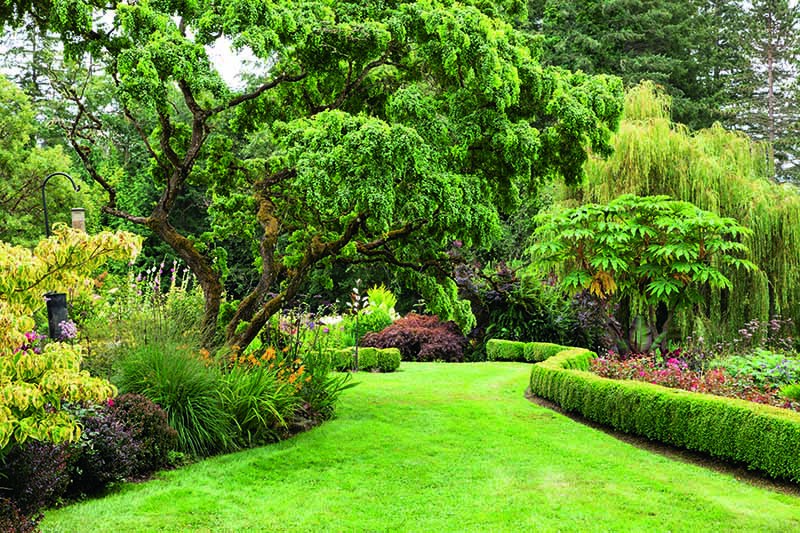
The stunning property now exhibits a landscape quite the opposite of what it was in its original state, with defined spaces and something to draw the viewer’s interest during each season.
Even those with a tiny urban spot in a desert climate can take inspiration from their use of shape, balance, and proportion to create little pockets that invite the viewer to take a moment to pause.
The Foliage Takes Center Stage
Flowers aren’t featured as much of a highlight in this book. Rather, it’s mostly about the foliage, which is where the PNW shines.
Just about every well-known ornamental that thrives in the Pacific Northwest is featured, such as hostas, ferns, Japanese maples, and various evergreens.
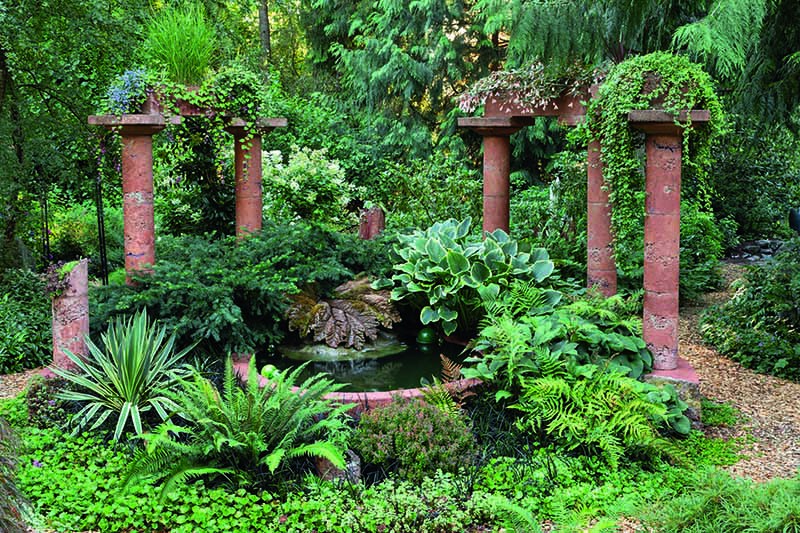
A vast majority of the highlighted plants aren’t native to the region but originate in similar climates. Think Japanese painted fern, Chilean hard fern, Japanese blood grass, and wintercreeper.
While they may not grow natively in the PNW, these plants illustrate the ways in which the world of horticulture isn’t constrained by borders or boundaries.
That’s not to say local plants fail to make an appearance. Vine maples are highlighted as both bonsai and full-sized specimens, rhododendrons are used to create notable borders, and junipers define sitting areas for weary walkers.
The flowers that do turn up in these pages are, for the most part, familiar to the region and include hydrangeas, irises, rhododendrons, fuchsias, geraniums, and heather.
But that’s not to suggest that any of the gardens are predictable. Each uses these common offerings in interesting and unique combinations.
Then there are less-expected plants. Trumpet pitchers complement sea kale, and hardy bananas stand next to barberry for an unanticipated display.
It’s enough to inspire any avid gardener in any climate to use their imagination to utilize the bounty that Mother Nature has provided.
As any gardener knows, it’s not only the plants that create the spaces. There are, of course, a plethora of pots in all different sizes, shapes, and colors. Rocks are used to form walls, pathways, and gates.
But what stands out are the pieces created by local artists, and repurposed elements that pop up in places you’d never expect.
Scrap metal becomes a welcoming path light, an old school bus door creates definition between two spaces, and a garbage can hung sideways on a wall lid acts as a planter for bromeliads, ferns, and mosses.
One design even features a chicken palace (Palais du Poulet) with its own turret, while another displays a rug of handmade tiles in a rainbow of colors.
Pat Riehl’s Vashon Island garden uses massive stumps from cut cedar, Douglas fir, and Madrone to construct seating, arbors, and artistic features for an otherworldly display out of a Grimms’ fairytale.
Combining landscaping expertise and a keen design sense, the images of these spaces serve to delight and inspire.
The Pictures Speak a Thousand Words
This isn’t a how-to book or a guide for gardeners.
It’s a coffee-table book meant to evoke discussion about the ways in which PNW locals use the art of gardening to create outdoor spaces that welcome friends and guests, and encourage them to linger.
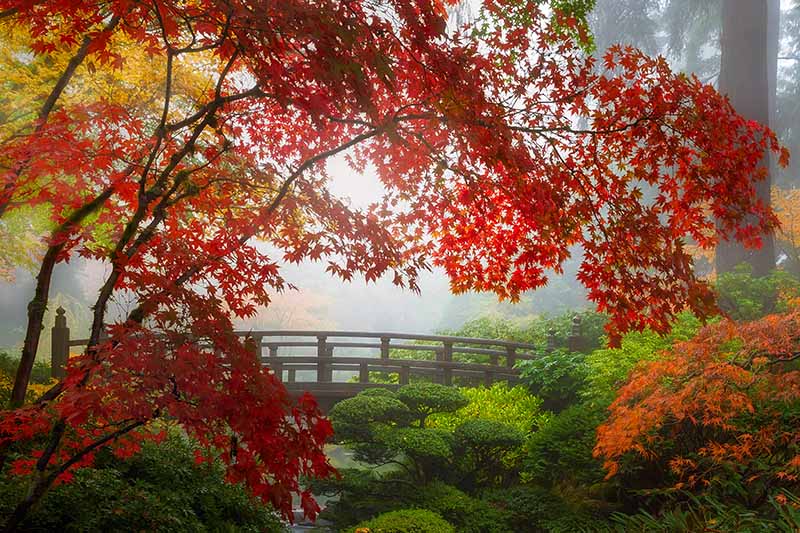
Imagine showing up to a fellow gardening-lover’s house and seeing this book on their table. It’s certain to make those green thumbs start itching to get their hands in the dirt.
William Wright’s vibrant photos start the conversation with a cacophony of colors, even when a space is primarily filled with varying shades of green. He harnesses the technique of chiaroscuro to bring living spaces to life on a static page.
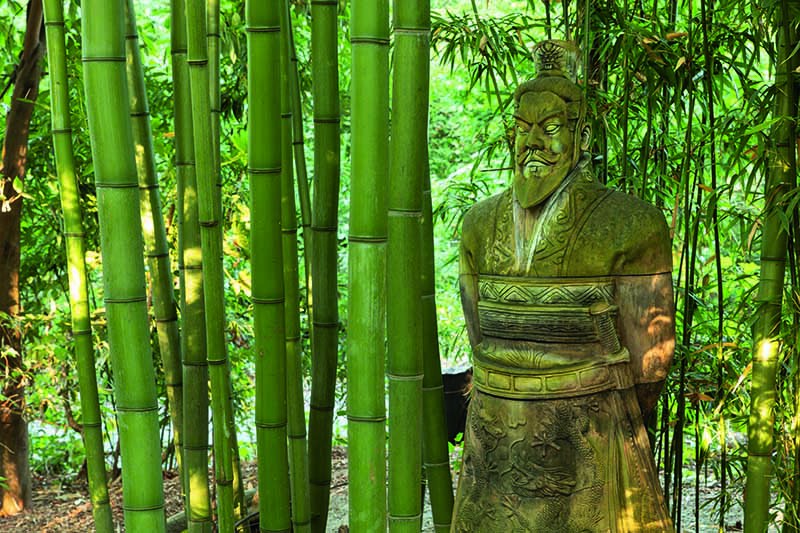
In one image featuring a Chinese terra-cotta warrior in a bamboo forest, the sunlight filters in through the foliage and speckles the stems and arms of the guard.
In another, a circular stone moon gateway is bathed in shadows and sunlight, drawing the viewer through into the mysterious spaces beyond.
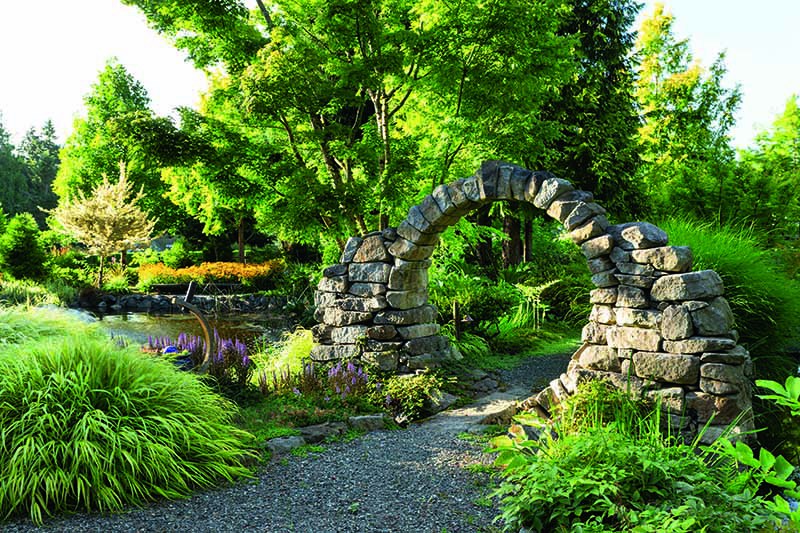
Thanks to the stunning imagery, the reader can practically feel themselves in the various spaces, smelling the evergreens and feeling the dappled sunlight on their own skin.
Accompanying the images are Brian D. Coleman’s capable descriptions. Coleman, West Coast editor at Old House Journal and Arts & Crafts Homes magazine, has written numerous books and articles for various publications.
He describes the history, intention, and the process of establishing each garden, as well as highlighting some of the plants and notable features of each space.
Garden Dreams Come to Life
“Private Gardens of the Pacific Northwest” is a book about dreams come to life.
It shows the reader not only how a few talented individuals brought their pastoral visions to fruition, but provides inspiration on how any garden-lover can make their own fantasy a reality.
With hundreds of vibrant images and descriptions that immerse the reader in the verdant playgrounds of the Pacific Northwest, the result is a book that isn’t so much about identifying species and describing techniques, but one about how a particular space can evoke an emotion.

Private Gardens of the Pacific Northwest
It’s a worthy addition to any garden-lover’s library. Find it now on Amazon.
And if you want to fill your bookshelf even more, we have some other book reviews for you to explore next:
